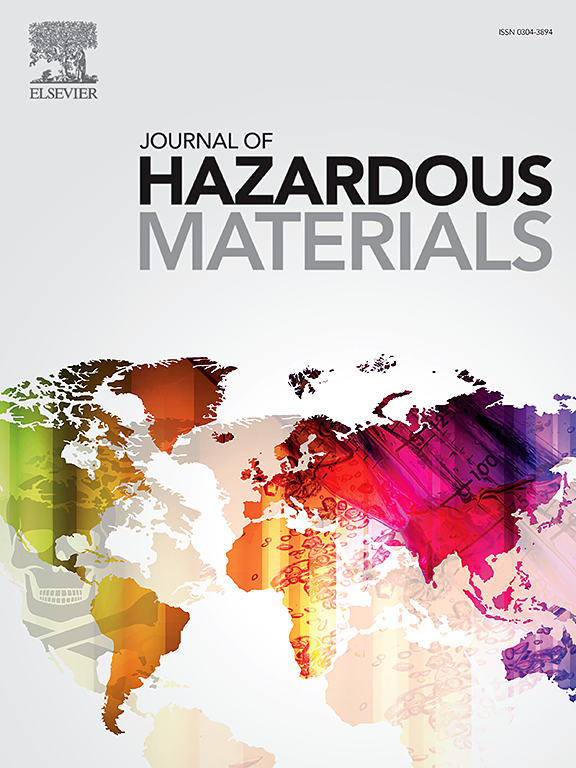Gut microbiota-mediated poly(ε-caprolactone) microplastic degradation exacerbates metabolic dysregulation
IF 12.2
1区 环境科学与生态学
Q1 ENGINEERING, ENVIRONMENTAL
引用次数: 0
Abstract
As common biodegradable plastics (BPs), poly(ε-caprolactone) (PCL) was used in food packaging, pharmaceuticals, biomedicine, and tissue engineering, which can be easily broken down by environmental microorganisms into microplastics (MPs), leading to their exposure and accumulation in the human body. However, the adverse health effect resulting from exposure to PCL MPs remain largely unknown. Therefore, this study comprehensively investigated the impact of PCL MPs on lipid metabolism, intestinal barrier, and gut microbiota. The results indicated that PCL MPs can promote lipid synthesis while inhibit lipid oxidation and secretion in mice and exacerbate metabolic syndrome (MS) induced by high-fat diet (HFD). Simultaneously, the intestinal microenvironment was also disrupted, primarily reflected in the increased Firmicutes/Bacteroidetes (F/B) ratio, decreased the relative abundance of Actinomycetota and Verrucomicrobia, and downregulated the expression of tight junction proteins and mucin. Notably, the PCL-degrading strain Brevibacillus formosus P9 isolated from the gut microbiota (GM) may critically drive metabolic disruption through mediating PCL degradation. This study provided an experimental paradigm elucidating GM-mediated amplification of MPs detrimental effects, and highlighted the urgent need to address the potential physiological risks associated with the widespread development and application of BPs.

肠道菌群介导的聚(ε-己内酯)微塑料降解加剧了代谢失调
聚ε-己内酯(PCL)是常见的生物降解塑料(bp),广泛应用于食品包装、医药、生物医药、组织工程等领域,易被环境微生物分解为微塑料(MPs),在人体内暴露积累。然而,暴露于PCL MPs造成的不良健康影响在很大程度上仍然未知。因此,本研究全面探讨了PCL MPs对脂质代谢、肠道屏障和肠道微生物群的影响。结果表明,PCL MPs可促进小鼠脂质合成,抑制脂质氧化和分泌,加重高脂饮食(HFD)诱导的代谢综合征(MS)。同时,肠道微环境也被破坏,主要表现为厚壁菌门/拟杆菌门(F/B)比值升高,放线菌门和Verrucomicrobia相对丰度降低,紧密连接蛋白和粘蛋白表达下调。值得注意的是,从肠道微生物群(GM)中分离出的PCL降解菌株formosus短芽孢杆菌P9可能通过介导PCL降解而严重驱动代谢中断。该研究为阐明转基因介导的MPs有害效应的扩增提供了一个实验范例,并强调了解决bp广泛开发和应用相关的潜在生理风险的迫切需要。
本文章由计算机程序翻译,如有差异,请以英文原文为准。
求助全文
约1分钟内获得全文
求助全文
来源期刊

Journal of Hazardous Materials
工程技术-工程:环境
CiteScore
25.40
自引率
5.90%
发文量
3059
审稿时长
58 days
期刊介绍:
The Journal of Hazardous Materials serves as a global platform for promoting cutting-edge research in the field of Environmental Science and Engineering. Our publication features a wide range of articles, including full-length research papers, review articles, and perspectives, with the aim of enhancing our understanding of the dangers and risks associated with various materials concerning public health and the environment. It is important to note that the term "environmental contaminants" refers specifically to substances that pose hazardous effects through contamination, while excluding those that do not have such impacts on the environment or human health. Moreover, we emphasize the distinction between wastes and hazardous materials in order to provide further clarity on the scope of the journal. We have a keen interest in exploring specific compounds and microbial agents that have adverse effects on the environment.
 求助内容:
求助内容: 应助结果提醒方式:
应助结果提醒方式:


